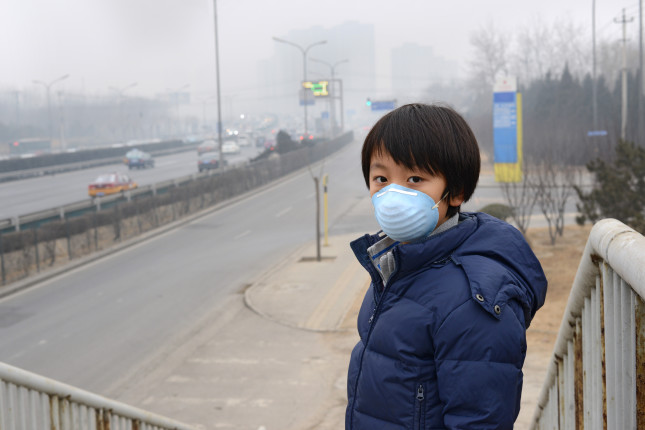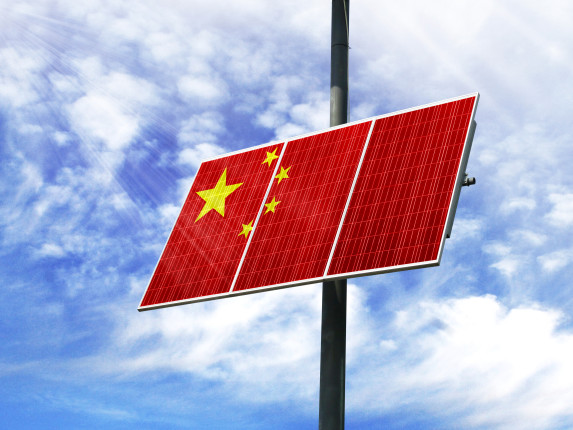-
China’s Coercive Greening Policies
June 10, 2021 By Judith ShapiroSmog, water pollution, deforestation and desertification—for decades, citizen activists and protestors have attempted to fight the environmental impacts of China’s development and industrialization. Now, confronted with climate change, the Communist Party of China (CCP) is well aware not only of citizen discontent, but also of the risks that climate change poses to the long term security, stability, and survivability of the regime. Rising seas will affect the great cities of Shanghai, Tianjin, and other areas along China’s coast. Glacier melt on the Tibetan Plateau will cause floods in the short term and in the long run fail to replenish the falling aquifers of the thirsty North China Plain. The prospect of high numbers of displaced Chinese citizens, internally displaced by global warming, is real.
Drivers of coercive environmentalism
The environmental crisis has presented an opportunity for the CCP to refresh its authoritarian model. Green agendas are increasingly entwined with the long-range plans of the Chinese state to make “ecological civilization” the centerpiece of the country’s national identity. While the phrase seems almost deliberately vague, it is positioned so as to claim China’s unique ideological contribution to the next stage of Marxism, while reconciling contradictions between economic growth and environmental protection. Unless the CCP can mitigate environmental threats to public health, along with other hot-button issues like corruption and inequality, the CCP will have failed to hold up its post-Mao bargain with the people to raise living standards while remaining in power.
Even as the CCP takes environmental issues seriously, it relies on a familiar authoritarian playbook for policy implementation. As my co-author Yifei Li and I show in China Goes Green: Coercive Environmentalism for a Troubled Planet, many of the tools and techniques that the State uses to carry out its environmental goals also serve to consolidate Beijing’s power over the individual. The playbook includes punitive, campaign-style crackdowns, and target-setting that is excessively quantitative and puts pressure on local officials to over-achieve and distort. In less-developed regions it also involves “green-grabbing” to construct hydropower dams and delineate national parks, both of which involve displacement of vulnerable populations in the name of renewable energy and nature conservation. Moreover, there is heavy reliance on risky, untested technological solutions, like trying to increase rainfall on the Tibetan Plateau through geoengineering and putting blankets on glaciers to slow their melting.
Consultation and public participation are needed for success
Consultation and public participation are needed in order to craft policies that are suitable to local conditions and engage citizens in implementation and support. Top-down measures are destined to fail in the long run without concomitant support from the bottom up. However, the erosion of the Party’s trust in civil society groups has accelerated under Xi Jinping.
Many of the advances made by civil society groups have eroded in recent years. In the mid-1990s, environmental non-governmental organizations (ENGOs) enjoyed more “space” than civic groups focused on other issues. Green groups creatively worked within the strictures of the Chinese state to extend the range of tools available to them to shape public behavior.
As compared with the early days of tree-planting, garbage pick-ups, and environmental education programs, civic groups’ tools diversified in sophistication and range. Environmental groups created social media apps to allow citizens to access data on air and water pollution and even to upload their own observations of pollution violations. A “Black and Smelly Waters” app was pioneered by the Institute for Public and Environmental Affairs. Public interest lawsuits and celebrity activism became widely practiced, as in the case of basketball player Yao Ming and the campaigns against shark finning and the use of elephant ivory.
Neither the CCP nor its state bureaucratic institutions are monolithic, and forces within the government are genuinely trying to clean up the country. Even in the best of times, environmental NGOs were obliged to partner with government agencies like the Ministry of Ecology and Environment, working together to close the “implementation gap” between public policy and what happened on the ground. If green groups failed to find powerful partners, they risked being shut down.
Under Xi Jinping, however, the operating space for international environmental groups has shrunk dramatically (under the 2017 Foreign NGO Registration Law all international nonprofits are directly supervised by China’s Public Security Bureau) and domestic environmental groups must tread even more carefully. However, by failing to trust civil society groups and engage citizens in “supervision from below” (as was a basic principle in early CCP days), the CCP deprives itself of the opportunity to craft policies that are suitable for local conditions. Some of the “green” programs are undermined even as technocratic, top-down control intensifies. Moreover, some of these programs, such as the much-criticized “ecological migration” project to force nomadic peoples into villages and towns, involve involuntary resettlement, abuses of human rights, and state-led mandates to transform livelihoods in vulnerable frontier areas.
Climate change reshapes environmental governance
China’s environmental protection administration has been steadily upgraded in terms of power and portfolio since its first iteration following the 1972 Stockholm Conference on the Human Environment. Now, China’s Ministry of Ecology and Environment (MEE) is responsible for climate change policy as well as a host of other environmental problems. It has a bigger budget and more personnel, is more capable of investigating abuses, and has more direct power over provincial governments. It even criticized the National Energy Administration for failing to control coal-fired power plants in polluted areas. That said, recent efforts of the MEE to create environmental standards for Belt and Road projects have met with considerable pushback. In addition to the huge challenge of whether China can meet its domestic goals of carbon neutrality, its international Belt and Road investments into fossil fuels could be making it harder for the planet as a whole to curb climate change.
Domestically, carbon markets are likely to be a significant feature of China’s carbon neutrality pledge. Efficient free market trading of carbon could be undermined, as authoritarian state goals will be able to decide the carbon budgets of enterprises, conferences and sporting events, and even cities. Moreover, carbon neutrality may rest on building even more hydropower dams in ecologically fragile areas in mountainous Western China, which can have consequences for human rights and biodiversity as well as potential disasters in earthquake-prone areas.
There is much to admire in China’s decisiveness on climate change and other environmental problems. In China, science is not questioned—if anything, scientists and engineers lead on these issues. The centralized system also has advantages: If energy-efficient buildings are mandated, then the construction industry risks heavy fines for noncompliance. If the Chinese state wants to stop importing waste from other countries, or to ban single-use plastics, there is a coherence to the policy process that a messier “democratic” governance system might envy. That said, we should not fall into the trap of thinking that a green dictatorship can solve our planet’s problems. As people used to say about the Mao period, what happens if the dictator is wrong?
Judith Shapiro directs the dual Masters in Natural Resources and Sustainable Development at the School of International Service at American University. She was one of the first Americans to teach in China after US-China relations were normalized in 1979 and has been involved with China ever since. Professor Shapiro is the author, co-author or editor of ten books, including China Goes Green: Coercive Environmentalism for a Troubled Planet (with Yifei Li, Polity 2020), China’s Environmental Challenges (Polity 2016), Mao’s War against Nature (Cambridge 2001).
Sources: The Third Pole, China Dialogue, The Diplomat, The Woodrow Wilson International Center for Scholars, South China Morning Post, New Security Beat, WildAid – YouTube channel, Africa Wildlife Foundation – YouTube channel, China File, Climate Works, Bloomberg, New York Times.
Lead Image Credit: A boy standing with smog in the background, courtesy of Shutterstock/Hung Chung Chih
 A Publication of the Stimson Center.
A Publication of the Stimson Center.








